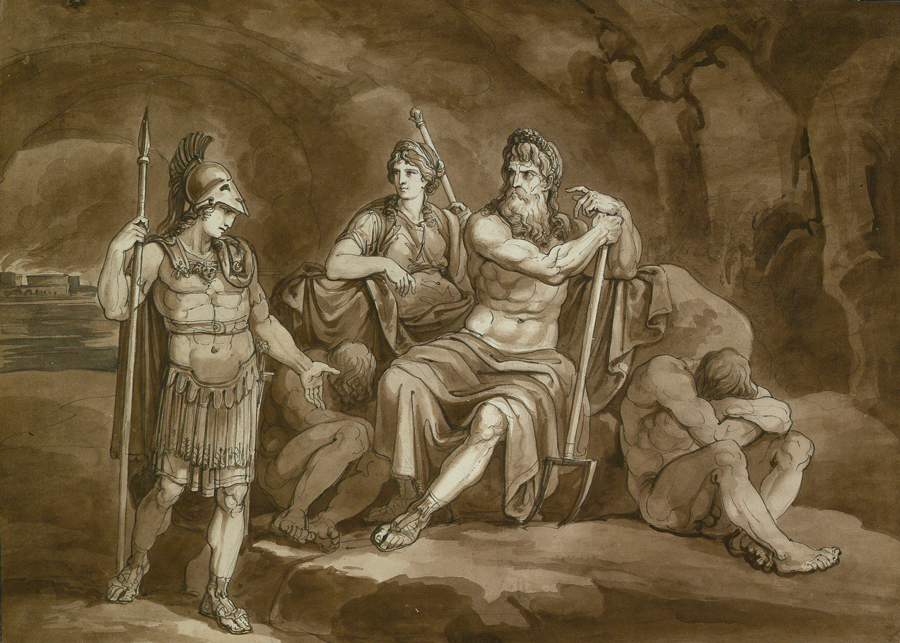Loading the page ...
Bartolomeo Pinelli
(1781–1835, Rome)
Telemachus Requests Permission from Pluto to Seek His Father in the Underworld. Pen and brown ink over pencil, brown and gray wash. 41.7 x 58 cm. Verso signed, dated and titled by the artist: Pinelli fece 1809 Roma / Telemaco implora da Plutone la grazia di ricercare suo padre, se fosse nel Tartaro.
The theme is taken from Les Aventures de Télémaque, fils d’Ulysse, a novel of education by the French bishop and writer François de Salignac de la Mothe-Fénelon (1651–1715). As the scion of an old noble family, Fénelon first enjoyed a notable career as a prince of the church, theologian and man of letters until he fell from grace in 1699. In 1689, at the suggestion of Madame de Maintenon whose spiritual advisor he was, Fénelon was appointed by Louis XIV as tutor to his grandson and possible pretender to the throne, the Duc de Bourgogne. For the benefit of his princely charge Fénelon wrote several entertaining and yet didactic works, including Les Aventures de Télémaque, which was written between 1694 and 1696. In this utopian novel Telemachus, the son of Odysseus, and his tutor Mentor travel through a number of ancient lands whose rulers are surrounded by opportunistic courtiers and false advisors. In one exemplary case Telemachus nevertheless succeeds in countering this evident decay of political culture by conducting a peaceful dialogue with the neighbouring states and introducing radical economic reforms. Indirectly, the novel amounted to a criticism of the absolutist rule of Louis XIV and his aggressive foreign policy and was understood as such by contemporaries. Fénelon was banned from the court in 1699 and retired to his diocese of Cambrai, where he spent the rest of his life. His novel went through many new editions and was translated into numerous languages, including German and Italian. The late 18th century being an age of profound political upheavals, the content of the work corresponded to the heady revolutionary mood of those years, which may have been the reason why the young Pinelli chose this theme.
The drawing is executed in a severe, almost purist Neoclassicist idiom and has a deliberate monumental effect. The powerful, muscular figure of Pluto, whose physiognomy is reminiscent of Michelangelo’s Moses, is located in the centre of the composition, his right hand resting lightly on a bident, or two-pronged spear. Reclining behind him is his consort, Proserpina. There is an impressive rendering of the naked and despairing figures of the damned, who are destined for Tartarus. With eloquence and a gesture of humility the young Telemachus courts the favour of the god of the underworld. The grotto in which the action takes place is depicted by means of a broad, flowing brush technique, which makes an effective contrast to the compact and linear treatment of the group of figures. Drawings by Pinelli from this neoclassical period are rare.
